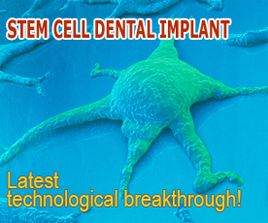|
|
Sinus Lift
Sinuses are air-filled spaces within the bones of the skull and face. Everybody has two maxillary sinuses located on either side of the nose just above the upper teeth. Sometimes when a tooth is lost in the upper jaw the bone will shrink and the sinus will expand. The decreased height of bone can lead to implant failure. A sinus lift bone augmentation will reduce the chances of failure.
Dr. Lem performs two types of sinus lifting procedures in the office: the lateral window approach and the internal osteotome technique.
With the lateral window approach a flap is made in the gum tissue and a small temporary hole is made in the bone adjacent to the sinus membrane. Special instruments are then used to lift the sinus membrane up and bone grafting material such as stem cells or tibial bone is placed to hold the sinus membrane in its new position. The gum tissue is then closed t with sutures and allowed to heal. After 3 to 4 months the bone grafting material will become hard, healthy bone and the dental implant can be safely placed.
For patients who need less bone the internal osteotome technique can be used. In this technique hole is made vertically through the ridge for the placement of a dental implant. A special instrument called an osteotome is used to elevate a small piece of jawbone upwards to lift the sinus membrane. Bone grafting material is then placed into the hole and the dental implant is placed at that time and allowed to heal.
|
|

News & Events
|
Stem cells are cells found in most, if not all, multi-cellular organisms. They are characterized by the ability to renew themselves through mitotic cell division and differentiating into a diverse range of specialized cell types.
|
|
A research suggests that coating dental implants with a synthetic bone material prior to implantation allows such implant to become incorporated much more successfully into the jaw, leading to smiles all round.
|
|
The results of experiments that focused on 'nanostructures'demonstrated enhanced bone response to dental implants as soon as 4 weeks after implant placement.
|
Newsletter
|